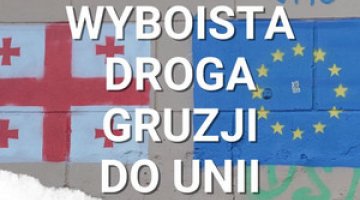Georgia: Is conservative-nationalist sentiment growing?
On 26 August in a southern village inhabited by both Orthodox and Muslim Georgians (the latter resettled from the neighbouring region of Adjara), the local authorities dismantled the minaret of the local mosque. The reasons given for this were that its construction was unauthorised, and that there had been irregularities in its importation from Turkey. This sparked protests by the local Muslims, which in turn caused demonstrations from conservative Orthodox groups protesting against the return of the minaret to its place. In the absence of any government response, the tension was discharged by negotiations between Muslim communities and the leader of the Georgian Orthodox Church (GOC), Patriarch Ilia II. Muslims make up at least 10% of the country’s population (in the areas controlled by Tbilisi, according to data from 2002). These are mainly ethnic Azeris, as well as Georgians professing Islam, who mainly live in Adjara.
Commentary
- The incident is yet another manifestation of recent tensions between the Georgian Orthodox majority and the country’s ethnic or religious minorities. Although such cases have so far been limited in scale, the very fact of their occurrence is a new phenomenon. It seems to be connected with the change in government after the parliamentary elections in 2012. In the period 2004-2012, the government of President Mikheil Saakashvili has consequentlypromoted a civic, non-ethnicmodel of patriotism. At the same time, its policies were restrictive, making frequent use of the police and the penal system. It provided (effectively, enforced) public order, but at the same time it drew down accusations of brutality and human rights violations upon itself. The weakening of the decision-making centre since the elections, and the new government’s policies (including an amnesty under which 14,000 people, or 60% of the total number of prisoners, were released) weakened public fear of the state authorities, while at the same time causing an increase in crime (a wide-spread perception), and giving more room for the expression of social tensions and discontent (including strikes, local protests, etc.).
- Apart from the secessionist regions of Abkhazia and South Ossetia, ethnic and confessional tensions have not so far caused serious social tensions in Georgia. The incidents recorded so far have been harmless one-offs up to this point; the more so as they have not involved the largest ethnic minorities, the Armenians and Azeris, who in total represent around 12% of the population (although especially in the case of the Armenians there is a whole catalogue of unresolved problems and long-standing grievances). At the same time, conservative-nationalist circles have become much more vocal in Georgia since the elections. This means that in the absence of any strong government response, similar cases may occur in the future.
- The key role of Patriarch Elias II in alleviating the current tension, especially in the light of the government’s inaction, demonstrates the growing political role of the GOC. Although the patriarch is trusted by almost the whole of Georgian society, the previous government – despite its declarations of respect – did not leave the Church much room to engage in internal issues (except at times of crisis such as the mass anti-government protests in 2007). The new government’s position vis-à-vis the GOC is clearly weaker. Its reluctance to confront the Church could, for example, have been seen this May during the violent mass protests held in Tbilisi against defenders of gay rights, to which the authorities – despite their declarations – did not effectively respond.





